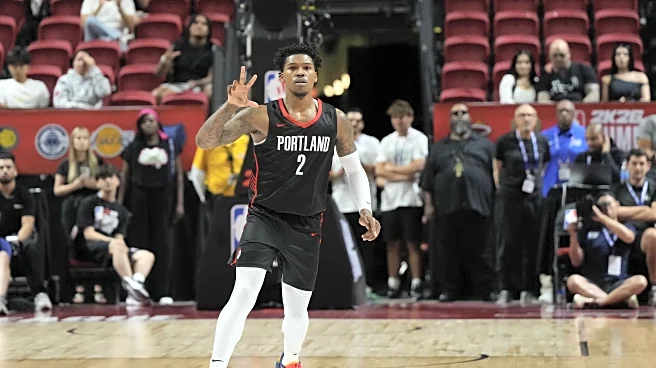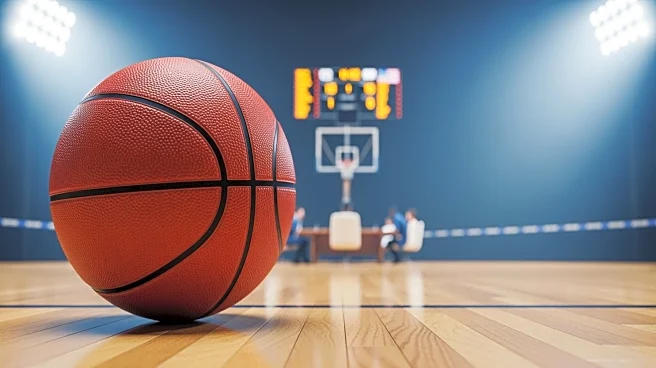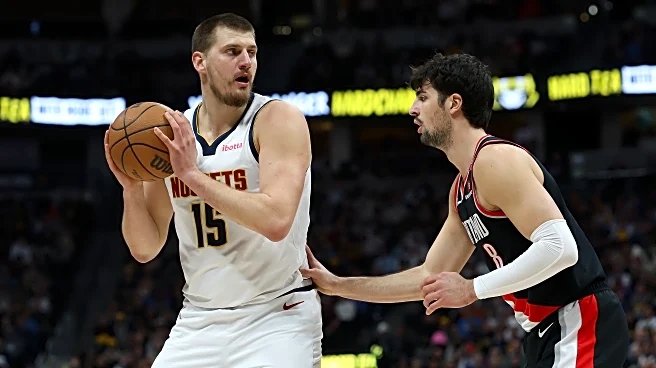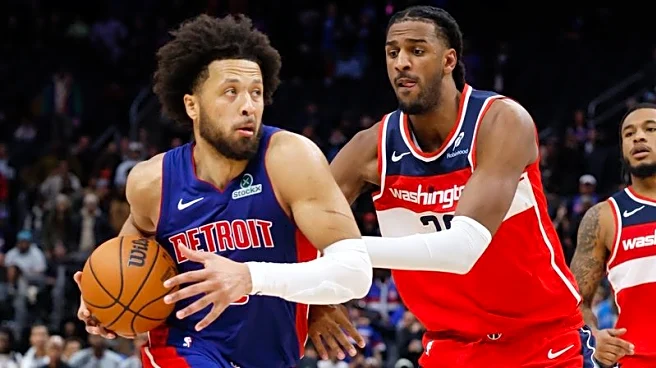The Portland Trail Blazers are carrying an adequate, if not impressive, 6-5 record 11 games into the 2025-26 NBA season. Their style of play has been described as exciting, vibrant, and fast-paced. Pundits
have had good things to say about emerging star Deni Avdija and fourth-year guard Shaedon Sharpe. But not everybody is pleased with all aspects of Portland’s approach. Witness this submission to the Blazer’s Edge Mailbag.
Dave,
We’re being held back by too much 3 point shooting. Can’t the players or the coaches understand that getting to the rim is the right strategy for this team? It feels great to see them score up close and fight for offensive rebounds. I can’t believe how many random 3s they take in between those drives. They’re killing me. Shouldn’t they start playing more disciplined offense?
Kev
On the surface, I’d say you have an argument. The Blazers are 7th in the NBA in three-point attempts per game at 42 per. That’s an 11% increase in three-point attempts over last season, almost 5 more attempts per game than the league average so far this year.
Meanwhile Portland ranks 25th in three-point percentage, shooting 33.4%. That’s a bad number, well short of the NBA average of 35.8%. The Blazers haven’t improved at all in their three-point shooting from last year, when they finished 26th overall.
Combining those stats–high attempts, low percentage–makes arguments like yours easy. If they’re not good at long shots, why take them?
Reality is a little more nuanced than that, however.
Let’s start with the homely basketball-strategy issue of court spacing. If nobody’s taking threes, defenders will sag towards the middle of the court, taking away the drives you’re admiring so much. In fact, this is a big source of Portland’s offense.
We notice the threes the Blazers shoot off the dribble more because they look like bad shots. But many of Portland’s threes are coming after drives, when the opposing defense has moved to stop the dribbler, who then passes to an open player. Passing up those threes is going to lead to worse shots inside, if not turnovers. Both the time spent and the shot attempts missed will kill Portland’s advantage on offense, based on speed and volume of shots rather than strict accuracy. In that way, even a credibly-missed three is better than a shot not taken.
The Blazers are generating 121 points a game–7th in the league–while shooting the 21st-best field goal percentage and 25th-best three-point percentage because they’re getting up so many shots. They average almost 7 more field goal attempts than opponents and a full 10 more three-point attempts.
Watch what that three-point attempt advantage does. Pay attention. It’s interesting.
The Houston Rockets lead the league in three-point percentage this year, shooting a phenomenal 43.5% as a team. That’s so far out of Portland’s league they might as well not be on the same planet.
The Rockets attempt 30 threes per game. Hitting 43.5% of them yields 13.05 shots hit per game. Multiply by 3 for the three-pointer and you get 39.15 points generated off of triples.
The Blazers attempt 42 threes per game. They shoot 33.4%. That’s 10 percentage points worse than the Rockets. Yet combined with number of shot attempts, Portland’s bad shooting yields 14.03 threes hit per game, or 42.08 points generated from threes.
Do you see what the Blazers did there? Sometimes they look like inebriated mongooses taking shots that our OP himself called frustrating and counterproductive. Yet they’re outscoring the best distance-shooting team in the league by 3 points per game beyond the arc.
Cue cartoonish double-take here. But it’s real. They’re actually accomplishing that.
Houston does outscore Portland 124 to 121 on average per game, but that’s still pretty impressive production for the Blazers, a team that isn’t even close to the Rockets’ scoring potential on paper.
Bad shots are bad shots. Nothing changes that. But the definition of “bad” for Portland isn’t as clear as it is for most teams.
The player taking the shot, spot on the floor, and level of defensive pressure still matter to the Blazers. Having Robert Williams III attempt logo threes while defended would be as silly for them as any team. But time elapsed is a fourth factor for Portland, weighing as heavily as the other three. That “defensive pressure” factor gets underlined too.
The Blazers want the first open reasonable shot they can find, period. Waiting until later in the clock is not likely to create a better attempt for this offensive cast. It’ll just allow the defense to narrow down at the same time the clock does…narrowing down on players who aren’t really capable of creating their own looks the way a Shai Gilgeous-Alexander is, by the way. That’s why the first open shot is usually best whether it’s a two, a three, or anything in between. It’s the secret sauce gluing their offensive burger together.
Let’s go further. There’s reason to think that three-point shooting–even fairly poorly–is actually helping the Blazers so far this season.
The league average on three-point shots so far is 35.8%. Here is Portland’s record relative to that number:
- Blazers shoot under league average: 2-4
- Blazers shoot at league average: 1-1
- Blazers shoot over league average: 3-0
For the last two years, the book on the Blazers was simple. They were destined to lose almost every game unless they got torrid-hot from the arc. Then they’d win.
The script has changed this year. Because of their shot volume and style of play, almost every game stays close. 6 of Portland’s 11 games have been decided by 5 or fewer points. 9 of 11 have stayed within single digits. (The Blazers won both blowout games, by the way.) Games have stayed close regardless of quality of opponent. It’s the Blazers brand. They’re going to give themselves a chance in every outing. And when they do get hot shooting from distance, that’s going to push them over the top.
The difference between these two realities is significant. “We have no chance unless we get hot from distance” is lower-league stuff. “We’re in it every night and if we get hot, you’re done” isn’t exactly championship material, but you can see the playoffs from there.
Shooting those threes in the first place is part of the key to success. You can’t get hot on shots you don’t take. Nor can you generate a volume advantage by shooting less.
If there’s ever a reason to believe the Blazers are developing organic percentage offense–let’s say they draft an MVP scorer or one of their current players develops into one–they might shift to more of an accuracy-based, chess-like approach. Until then, outscoring the league’s best in a category that they, themselves are profoundly un-talented in while generating Top 10 offensive production with a Bottom 10 offensive lineup is plenty good. For now, they’ll take it.
Thanks for the question! You can always send yours to blazersub@gmail.com and we’ll try to answer as many as possible!














